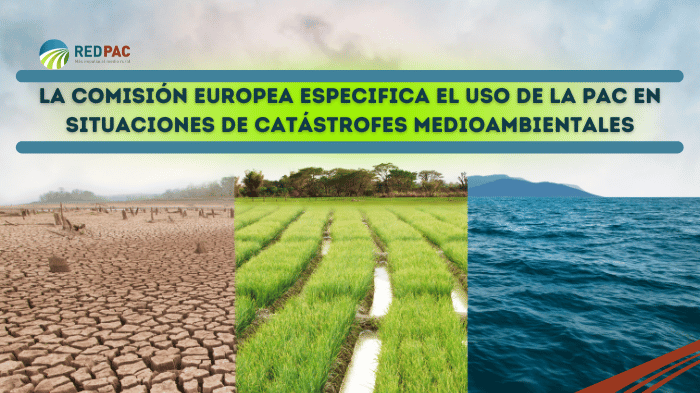
04 de July de 2024
Dinamización rural
Cambio climático y gestión de recursos naturales
The new interpretation of the concept of force majeure exempts Member States from the need for a case-by-case assessment. However, the new interpretation of this rule also includes conditions allowing for the presumption that all farmers located in an area are covered by force majeure.
- A new communication from the European Commission exempts the agricultural sector from bureaucratic procedures in the use of force majeure and exceptional circumstances of the CAP in environmental disasters.
- The new application of the concept of "force majeure" allows the inclusion of all farmers working in an area delimited by natural disasters within this exceptionality and exempts them from making particular requests.
- Member states may delimit these areas via satellite and without the need to assess each case individually.
New CAP simplification measures are being implemented to reduce the administrative burden on farmers across the European Union (EU) in the long term. On this occasion, the European Commission (EC) has issued a communication to clarify the use of the concept of "force majeure" and exceptional circumstances for the EU agricultural sector in the event of unforeseeable and extreme weather events. The clarification aims to provide certainty to farmers affected by the Common Agricultural Policy ( CAP ) by ensuring uniform application of this concept by national administrations throughout the Union.
The concept of force majeure allows farmers who have been unable to meet all CAP requirements due to exceptional events beyond their control (such as severe droughts or floods) to maintain CAP support. The application of this concept is decided by Member States based on the evidence on the ground and in light of EU agricultural law. Until now, the exceptional nature of the use of force majeure was applied restrictively, generally on a case-by-case basis and assessed on a farm-by-farm basis.
However, with the new EC communication, the use of the concept of "force majeure" can be applied to all farmers working in a defined area affected by severe and unforeseeable natural disasters resulting from extreme weather events. This means that farmers within the affected area will not have to complete individual applications or provide evidence of compliance with force majeure conditions, which reduces the administrative burden on workers and allows the State to respond more quickly to any contingencies that arise.
Exemption and presumption
The new interpretation of the concept of force majeure exempts Member States from the need for a case-by-case assessment. However, the new interpretation of this rule also includes conditions allowing for the presumption that all farmers located in an area are covered by force majeure.
To delimit the climate-related disaster zone, Member States may use satellite data for the entire affected area, without requiring specific information for each farm located within that area. To delimit force majeure events, national administrations may also use additional information, such as the type of slope, soil, or crops planted, to define the entire affected population without the need for individual inspections. This would be useful for cases such as frost, which may not affect all crops equally, or torrential rains, which may have a different impact depending on the slope and soil type.
The Commission establishes channels for Member States to obtain legal guidance whenever necessary.
Context
Following various demonstrations at the beginning of the year and at the European level by the agricultural sector, the EC presented its first simplification measures to permanently reduce the administrative burden on EU farmers. Finally, on March 15, it presented its proposal for a targeted revision of the Common Agricultural Policy, which came into force on May 25 after being approved by the European Council and Parliament.









